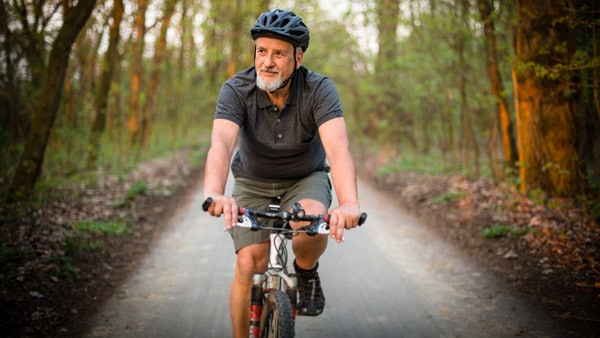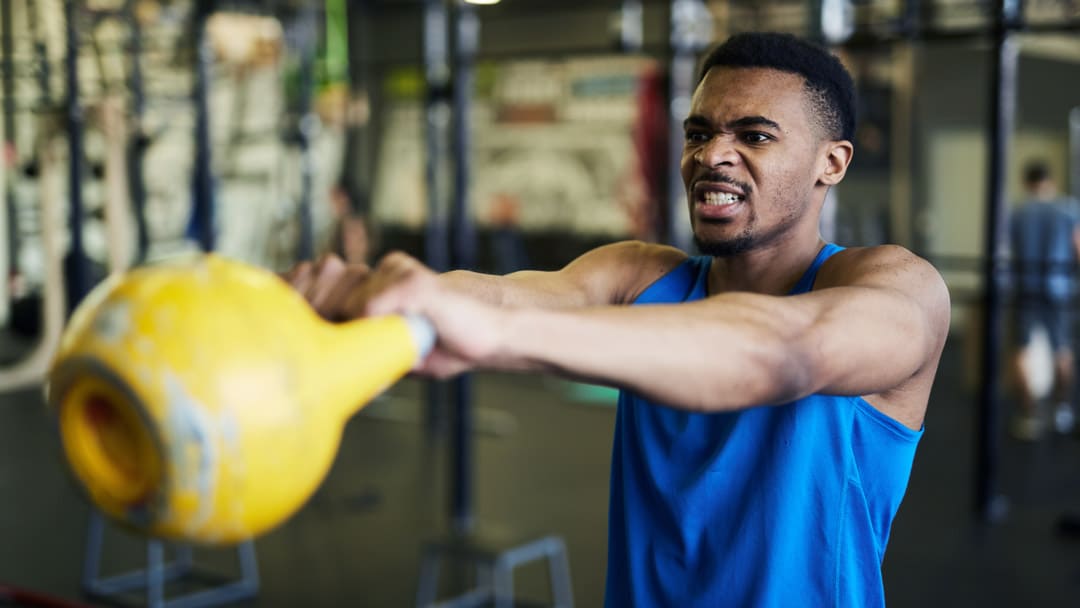My first time in the gym went really well. I did 20 minutes of cardio, 10 minutes on the defibrillator and 3 days in hospital!”
All jokes aside, a workout shouldn’t leave you feeling like you might need to see a doctor afterwards. When it comes to exercise, specifically when you’re starting out or if it’s been a while, less is more. Even if you had no problem getting into full beast mode back in your high school days or in your 20s, the truth is you don’t need to push yourself hard for exercise to be effective.
It’s easy to hit mental roadblocks, get discouraged and not be consistent when a new workout activity is simply too fast-paced. Think of those boot camps you signed up for, the new running regimens you started or the big-commitment training routines you tried that a friend or a friend swore by. Where are they now? They’re all lying in your fitness grave. Too much, too fast is harder to sustain. We’ve all been there!
For most people, the pros of doing cardio outweigh the cons. However, when it comes to high-intensity exercise, people who aren’t accustomed to working out at that level can be at higher risk of injury. They may find it mentally challenging to keep up with it regularly.
And when it comes to getting in shape, consistency is key! It’s better to do some simple exercises every day or every other day instead of only doing a huge workout every once in a while.
This is where low-intensity workouts come in. Because the truth is, exercise doesn’t need to be all out, full-throttle, to make a difference. The important part is getting your heart rate up!
Low-intensity workouts 101
Any activity that elevates your heart rate to 57-63% of your max, typically for 30 minutes or more, but allows you to maintain a conversation is considered a low-intensity workout.
Low-intensity workouts can provide similar benefits to high-intensity ones, but it’ll need to be twice as long as higher intensity workouts to experience the same calorie burn.
Finding the heart rate sweet spot
To get going with low-intensity workouts, you first have to know your max heart rate. The simplest way to do some simple math: 220 – your age = max heart rate.
To figure out your ideal heart rate zone for your low-intensity activity, multiply that number by the percentage of heart rate you want to be in: max heart rate x 0.60 = rough heart rate zone to look for.
Putting into practice: low-intensity exercises to try

There are tons of ways to get into the habit of low-intensity exercise, even simple day-to-day activities you can do for longer. Consider adding the following low-intensity workouts into your routine:
Walk at a brisk pace
Walking is an easy way to get your heart pumping. Did you know that walking for 150 minutes a week can reduce the risk of most chronic diseases by 25 to 50 percent? That’s a lot! With the nice weather here, getting active is as simple as stepping out of your front door for 30 minutes.
Jog lightly
Just as rookie jugglers should start with beanbags before working their way up to chainsaws, the expression “walk before you run” is a great tip to ease into jogging. Next time you head out for a refreshing 30-minute walk, bust out one minute of light running every five minutes. Then slowly work your way up to the full 30-minutes, one minute of jogging at a time.
Swimming laps
Swimming is great for people of all ages. Alongside getting your heart rate up, it works out the muscles in your entire body. It also helps you to have good posture, which means you can avoid getting hunched over as you age.
Use an elliptical machine
An elliptical machine can burn more calories in 30-minutes than running on a treadmill (between 270 and 378 calories based on your body weight). It’s also easier on your knees, hips, and ankles than running since your feet never leave the pedals.
Lift weights slowly
Do fewer reps at a slower pace. Here’s how to do it: lift the weights at a steady pace for 10 to 14 seconds, then release them slowly for 5 to 10 seconds. You only need to do 5 reps per set at this slow pace. An older study shows that this method increased the muscle strength of untrained middle-aged men and women by 50 percent in 8 to 10 weeks.
Row at a steady pace
Rowing burns big-time calories without putting a lot of stress on your joints. It’s often suggested as the exercise of choice for people in active recovery because it is easy to control the pace and movement. Grab some headphones, throw on your favourite podcast and row away!
Cycle at a casual pace

With high gas prices right now, hopping on a bike is more appealing than ever. And more importantly, biking to work has been associated with a lower risk of cardiovascular disease, cancer, and premature death. It’s also a great way to boost your mood after a long workday.
Benefits of low-intensity exercise
Stronger heart, lungs, muscles and bones—similar to a more intense session—are just some of the benefits of low-intensity workouts. They can also:
- Increase your aerobic capacity (your body’s ability to use oxygen during exercise)
- Help your body break down carbs and fats for fuel
- Strengthen your slow-twitch muscles
- Move oxygen more effectively to your muscles, keeping your body running like a well-oiled, workout-gear-clad machine.
Other benefits of low-intensity cardio training include an endorphin rush (feel-good chemicals released by your brain) to help boost your mood, increased joint mobility and reduced stiffness, better balance, and improved sleep. It can also help you manage or prevent health concerns like high blood pressure, diabetes and heart disease.
Most of all, low-intensity exercises might be more enjoyable as you ease into exercise, making it more likely you’ll stick with your program than that gruelling routine you had in mind originally.
What are some low-intensity activities you swear by for that fitness kick? Let us know in the comments!


Let’s Talk!
Did you enjoy this article? Let us know in the comments.
0 Comments